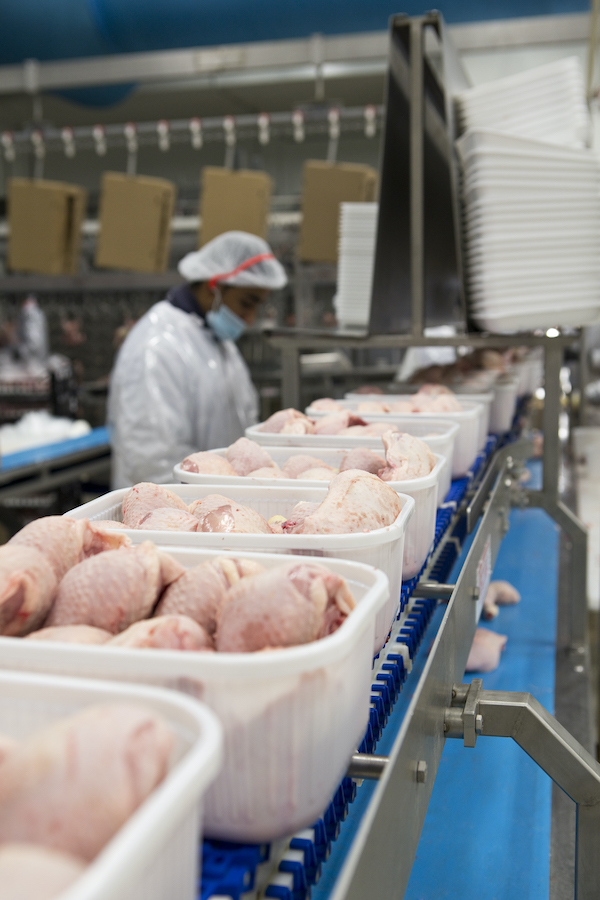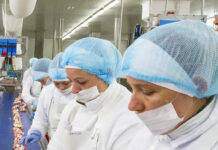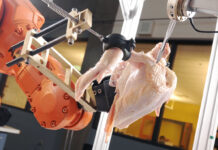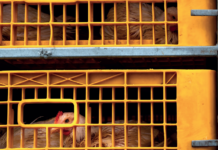
In an integrated chicken meat producing company, the processing plant is the only revenue-generating area, whose worth-making capability depends strongly on the performance of the processing yield, the most important operational cost-reducing driver.
Ing. Fabio G Nunes, Poultry Processing Consultant, Brazil
fabio.g.nunes@hotmail.com
“If you cannot measure it, you cannot improve it.”
Sir William Thomson, The Lord Kelvin (1824-1907)
Given the cost of the chicken products is governed by euros and production volume, an increasing processing yield will pull the costs of final salable weight down, while concurrently pushing the saleable volume up without additional raw material, overhead and labor expense costs, though. Therefore, boosting the processing yield and yield value might be the difference between average and outstanding economic performance and, in some cases, making a profit or losing money.
As outstanding performance and profit are the goals, once the live broilers arrive at the plant, the company must secure the best operational methods are equally applied to all birds during the work hours as to guarantee the completeness of the saleable weight will be harvested from every single carcass, an endeavor where every gram of meat is a valuable contribution to the maximization of the processing yield.
From the arrival of broilers at the plant onwards, the processing yield is under continuous threats inlaid in the diversity of operations the birds go thru – discharging, live hanging, stunning, scalding and picking, and evisceration. Of all these processes, the evisceration is undoubtedly the one most likely to inflict a wide array of significant losses of varied origins to the processing yield – skin loss at head puller, short hock cutting at transfer, skin loss at venter, carcass damages from poor equipment performance, fecal contamination, edible giblets going down the drain, aggressive cropping, and loss of the abdominal fat pad.
The continuous increase in poultry meat consumption over the last few decades has guided the genetic selection process toward fast-growing birds. To meet the demands of consumers, intensive genetic selection has led to great improvements in the carcasses’ economic traits such as daily weight gain, feed efficiency, and breast yield, and to some downsides, as well, like the increase in the fat content of the carcasses, as fat deposition and rate of gain are closely related.
The largest and most obvious resulting fat depot in the carcass is the abdominal fat pad. Yet averaging around 2.0% to 3.0% of the broiler body weight, with females presenting higher percentage of fat than males, the fat pad may comprise as high as 4% of it, as well.
This fat depot does not come for grant, though, but is costly produced along the fattening period. Getting rid of it at the processing plant, will not just affect the processing yield alone, but the processing cost, as well, which is directly or indirectly charged to the consumer, thereby presenting an additional economic burden.
By replacing the rhetoric by numbers, let’s take a clarifying look at the economic significance of the abdominal fat pad for a plant running 100,000 bpd of 2.0 kg of live weight, and loosing just 10% of the abdominal fat pad weight during the evisceration:
100,000 bpd x 2.0 kg LW = 200,000 kg Live Weight/day
200,000 LW/day x 2% Fat pad = 4,000 kg/day x 10% loss = 400kg/day
3% Fat pad = 6,000 kg/day x 10% loss = 600kg/day
400 kg/day x 22dd/mo. x 12mo/yr. = 105,600 kg/yr loss
600 kg/day x 22dd/mo. x 12mo/yr. = 158,400 kg/yr loss
Yet the global consumption of bone-in and boneless chicken parts has been slowly and steadily outpacing that of whole chickens, it is undeniable the whole chickens still are a best-seller product in countless markets around the world.
Therefore, their production requires the companies implement the monitoring of the evisceration process’ performance as to maximize the highest retention of the abdominal fat pad by the carcasses, thus reducing a loss that despite its great economic significance is the least visible and alarming among all those likely to occur during the evisceration, though!
By achieving so, the poultry companies will be greatly benefiting from its significant contribution to the processing yield and, consequently, to their bottom-line, as well.
Literature available from author upon request

















